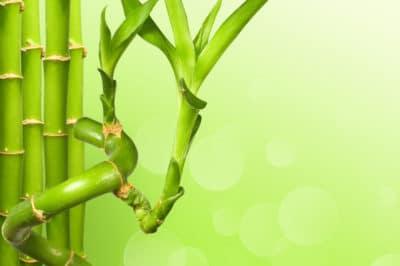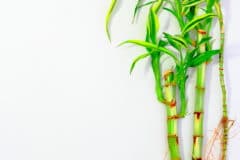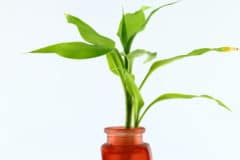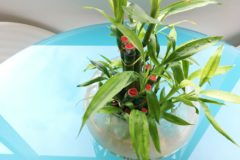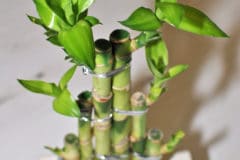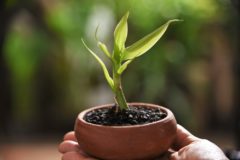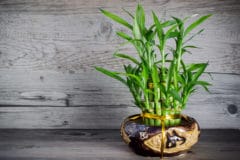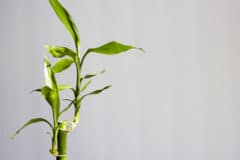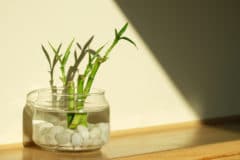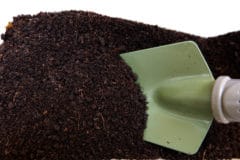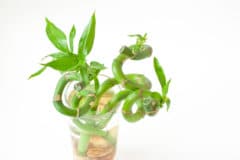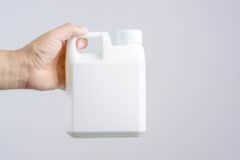Growing Lucky Bamboo
Lucky bamboo has a number of cultural requirements They include:
- Bright but indirect light – minimal time in full sun.
- Temperatures no lower than 50°F (10°C).
- Water or soil as a growing medium; water should be rainwater or filtered water.
- Occasional fertilizer.
- Daily misting to keep humidity up.
Suspended Animation
Lucky bamboo is not a plant that must be constantly growing. It has the ability to remain healthy in a semi-dormant stage for many months. If lightly fertilized, it will quickly respond, but most people want their lucky bamboo to remain close to the same size rather than becoming a lush plant. That’s especially true of the plants people keep on a small space such as an office desk.
Too Much Fertilizer
Overdoing it on the fertilizer is probably one of the fastest ways to kill your lucky bamboo plant. Excess nitrogen will make leaves and then stalks turn yellow. If you continue to give it food, the root ends will begin to rot, leading to the death of the plant. Excess fertilizer also causes algae growth in the water lucky bamboo grows in.
Fertilizing Plants Grown in Water
The primary nutrient lucky bamboo needs is nitrogen. It can grow for a long time in plain water because it can obtain nitrogen from the water. Each time you change the water – which should be at least every two weeks – you add fresh nitrogen. Pouring the water back and forth a few times before refiling the container will provide even more.
Fertilizing Plants Grown in Soil
Lucky bamboo can also be gown in soil. Commercial potting soil works well, as does home-made potting soil with plenty of humus, perlite and vermiculite to promote drainage. The soil should be kept moist but not soggy, as that will induce root rot. If you have an aquarium, you can water the potted plant when you change the water. Otherwise, use a highly diluted commercial liquid fertilizer.
Solving Fertilizer Problems
Commercially-grown plants are often fertilized to speed growth – when you first bring them home, don’t fertilize for at least three months. While inadequate fertilizer is rarely a problem, if you really think your plant needs to be fed, put no more than a drop of liquid fertilizer in the water. For soil-grown plants, leach periodically or repot to prevent salt build-up.
